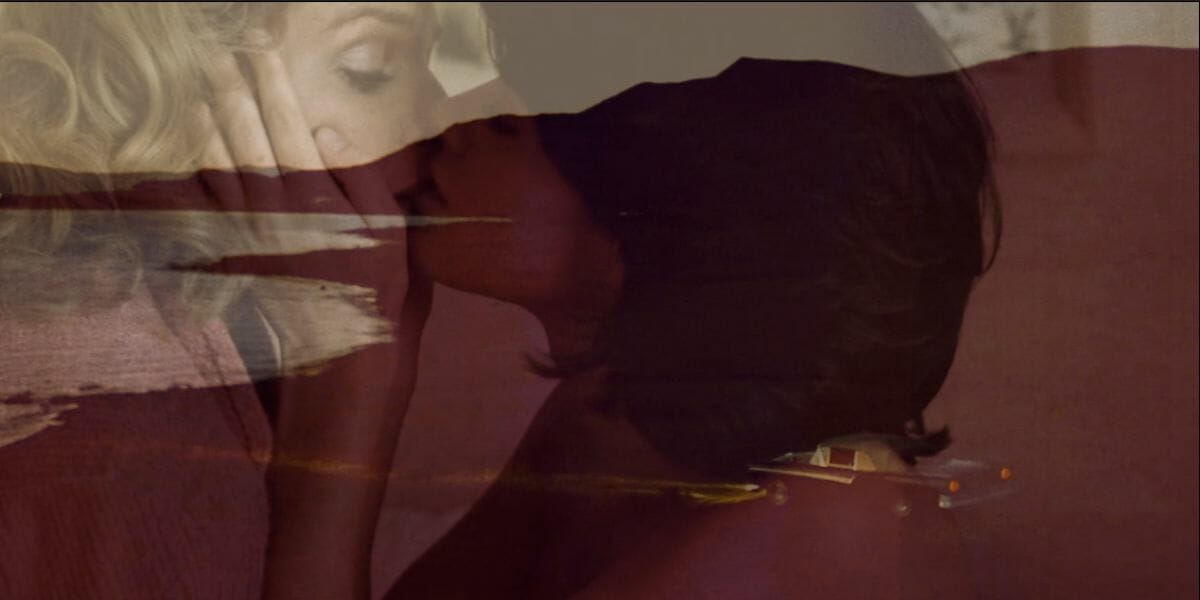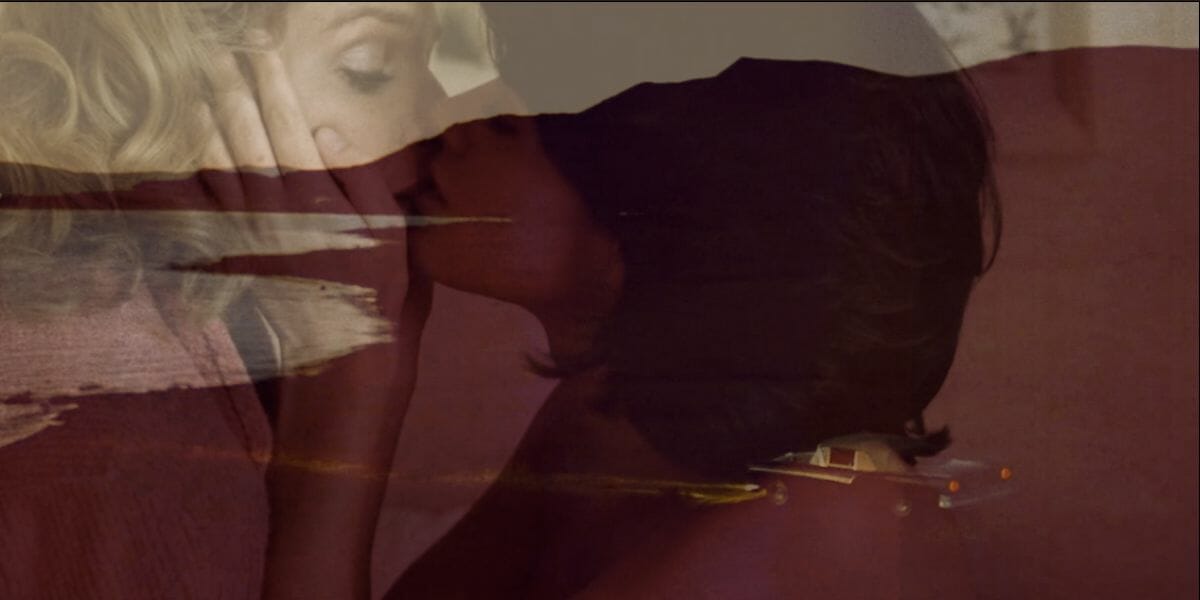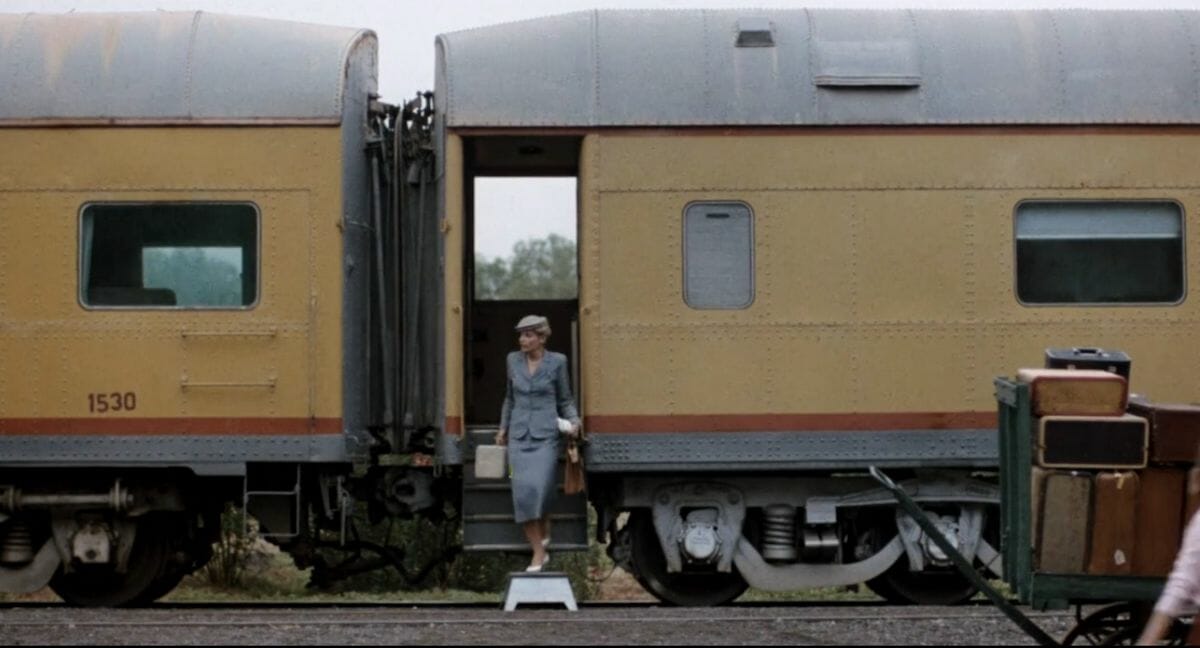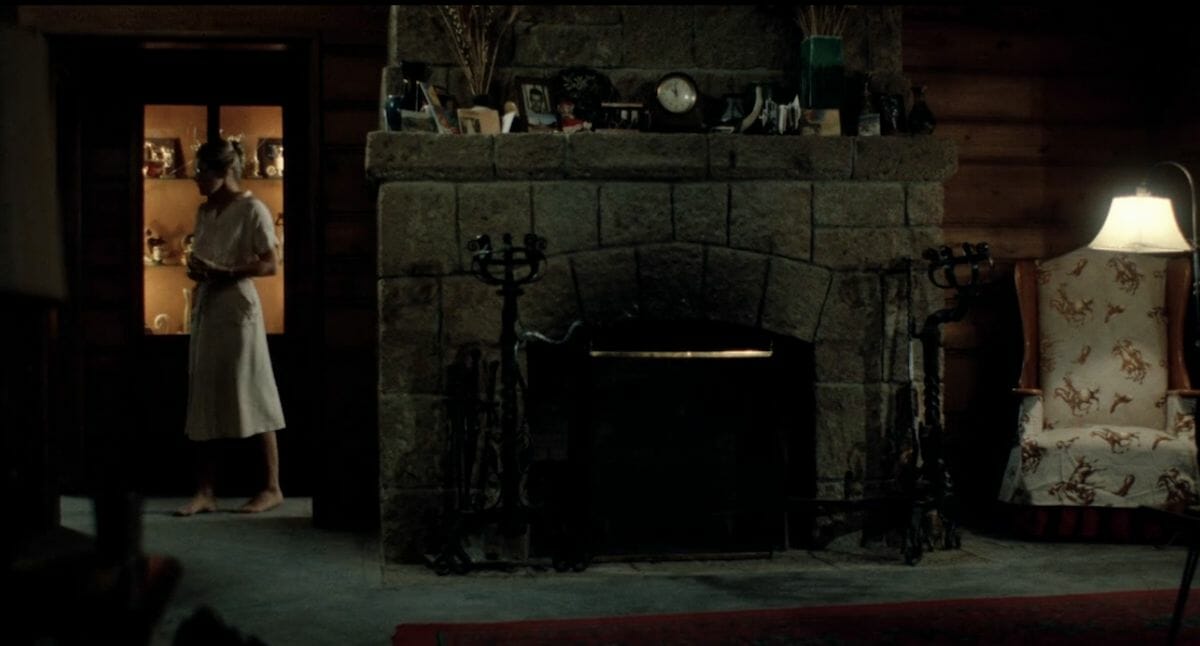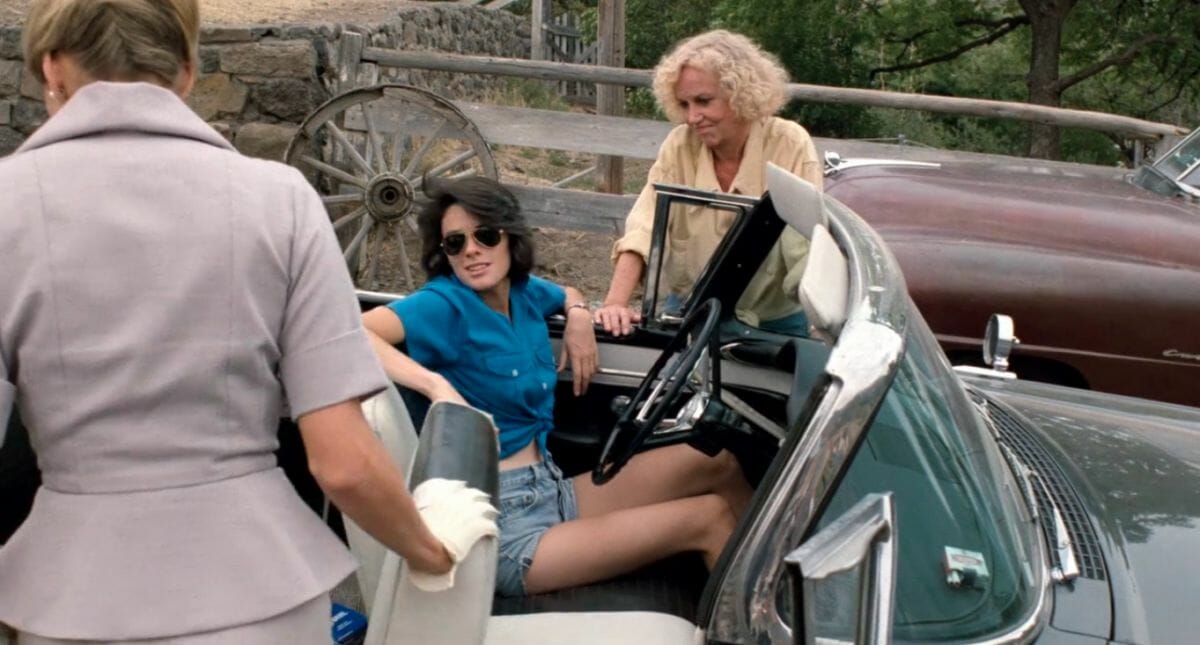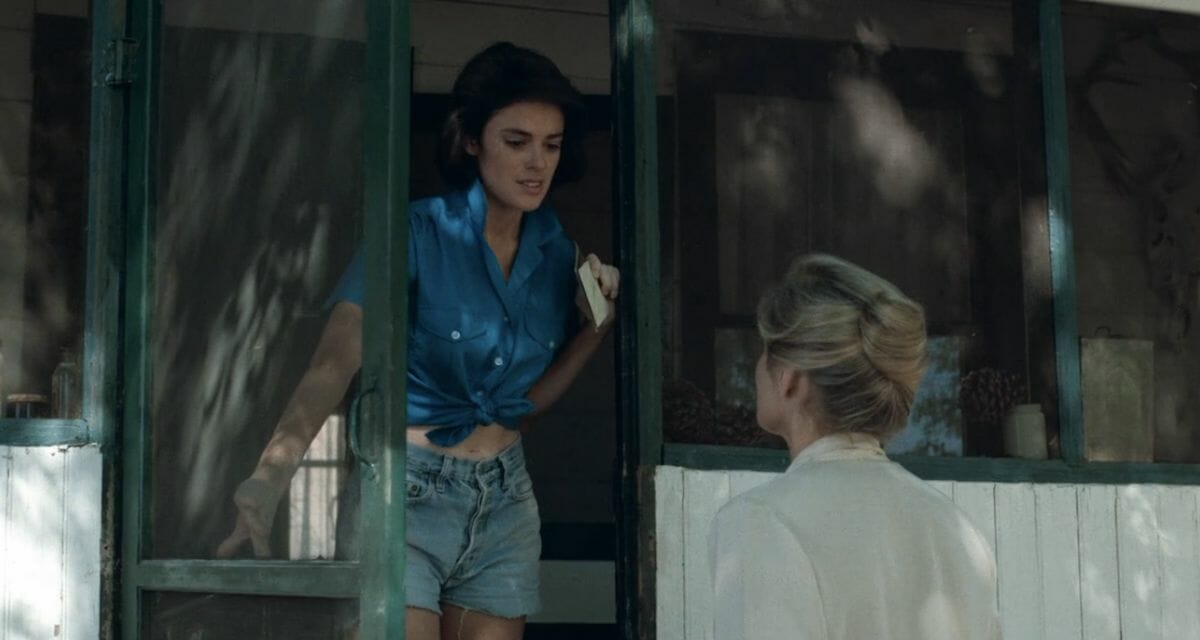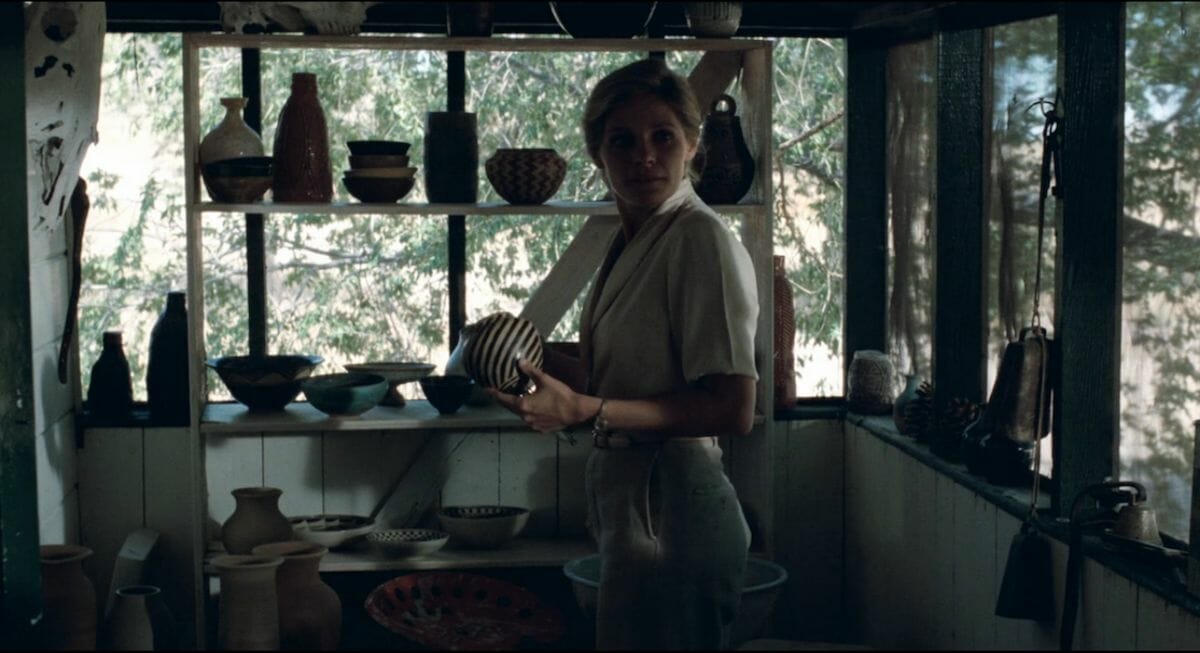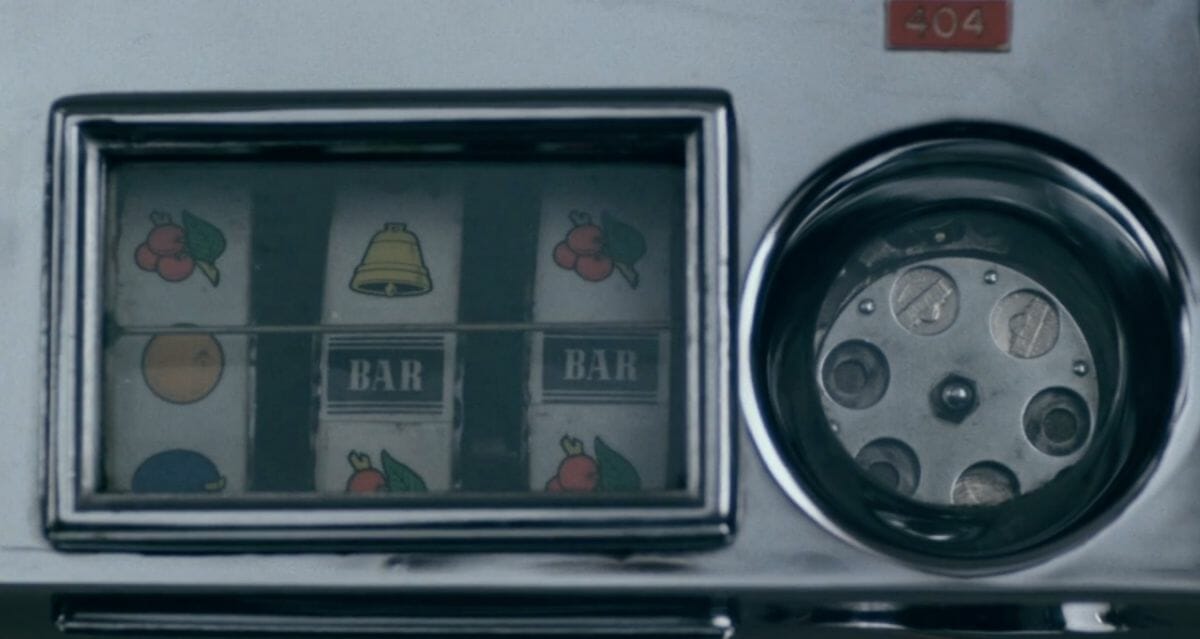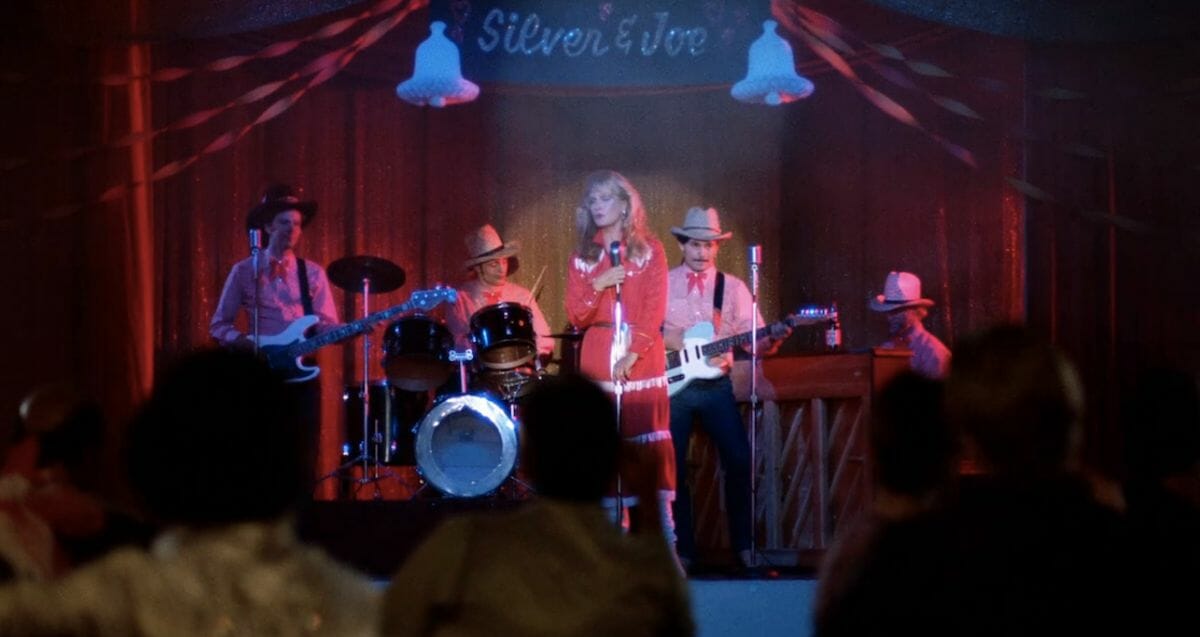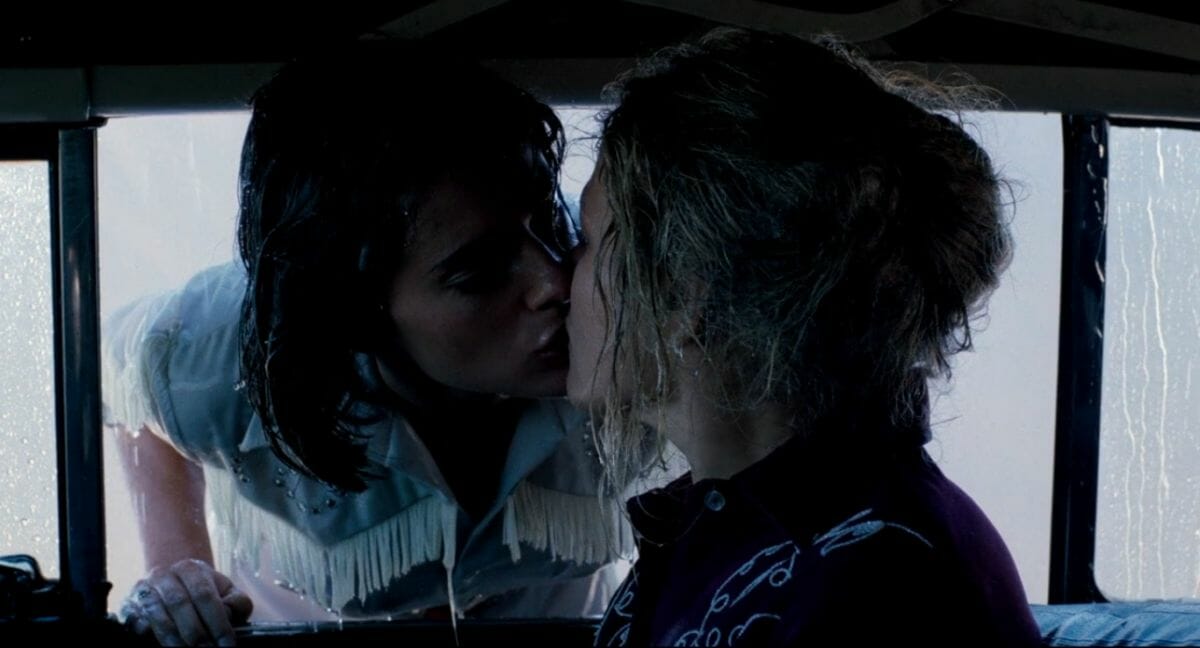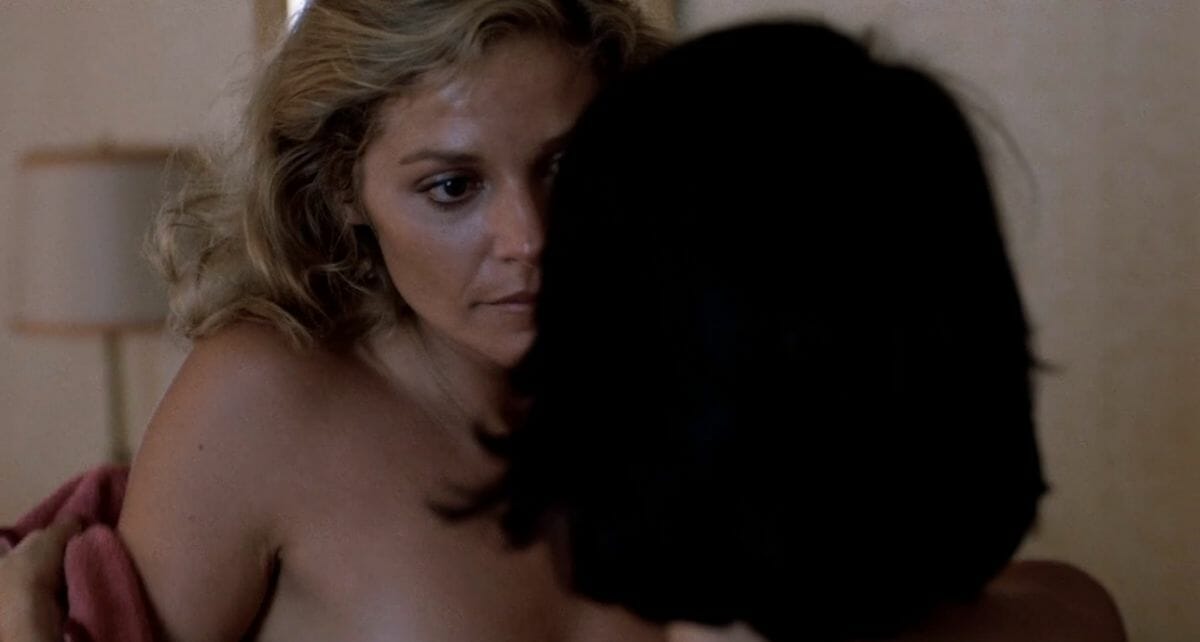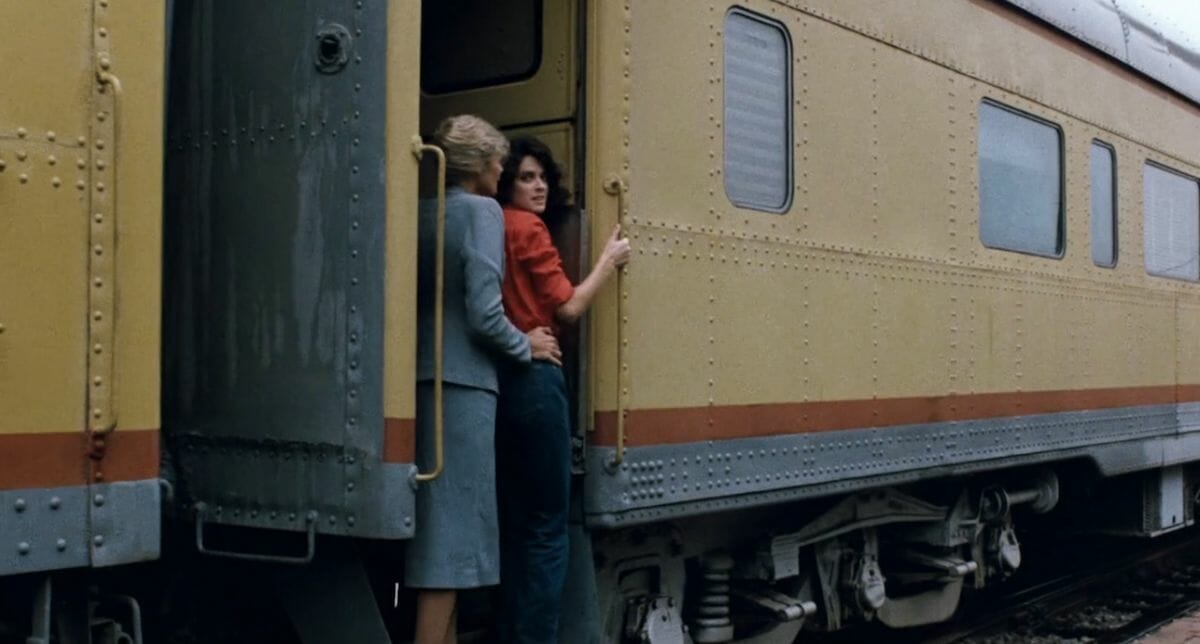In 1959, a train rolls into a station. Patsy Cline’s voice sweeps across the dry ground, blanketing the distant mountains. Vivian Bell — whose gray suit matches the train she’s disembarking — looks around for someone, but finds nothing.
Desert Hearts was released in 1985 to mixed reviews, though it has garnered cult status within the lesbian community by nature of being one of the very few films to follow lesbian protagonists. The film takes place in late ‘50s Nevada, and is soundtracked by the old honky-tonk records of the era and region, steeped in syrupy baritones and dustbowl fingerpicking.
Desert Hearts director Donna Deitch allocated twenty percent of her budget to obtaining the music rights for its soundtrack, drenching the film in its setting as it’s carved meticulously by its sound. The soundtrack dips into the love story and vice versa, the musical exposition and plot flowing into each other with ease and control, and underlining the story’s fundamental romance. Baked into the music of the West — the honky-tonk sorrows and rock-and-roll heat — is love.
The tone is immediately blurred as beginnings converse with their endings — time feels like an ouroboros, consuming itself. Leaving and arriving overlap, swimming into each other. As Vivian arrives in Reno, Cline sings the opposite, as her 1963 single, “Leavin’ on Your Mind” swells. Her voice is languid and sprawling — with a passion that grows with the strings and trembling piano keys, and when she belts, it seems as if it’s because she can no longer hold the emotion in her throat. If you allow it, the song spoils the ending of the film:
If you got leavin’ on your mind
Tell me now, get it over
Hurt me now, get it over
If you got leavin’ on your mind
In the song, Cline is resigned to her fate. She doesn’t plead, or cry, and, at just under two and a half minutes of runtime, the song is more of a brief meditation than a lovelorn letter. Though she asks the question — “do you still love me?” — she’s already accepted the answer.
We don’t yet know what will become of Vivian at this point in the film. In fact, we don’t know anything about her except what we see in front of us: a blond, pearled woman stepping apprehensively down the stairs, tugging gently on her angular suit. But Cline’s song is a warning — not of immense heartbreak, but of the natural ebbing of love; its sways and surges, and every step that lines its edge. And then, of course, the leaving.
Vivian has come to Nevada to attain a quick divorce, for which the only prerequisite is six-week residency in the state. She does not want to involve herself with the locals (she says as much to her hostess), only to meet with her lawyer and prepare her syllabus for the English Literature course she teaches at Columbia. She is no match, of course, for Cay.
Vivian’s love interest quite literally gusts past her in a billow of Western dirt, sunlight glinting off the chrome of her gumdrop convertible. A 25 year old waitress at a casino, Cay is about as “out” as one could be in late 1950s Nevada. She brings women back to her house where she sculpts pottery, wears Levi’s and cowboy boots, and wears t-shirts without a bra. She embodies freedom and spontaneity, a new life which Vivian might fold herself into after leaving her unhappy marriage behind in New York.
We can feel the tone shift, and literally hear it, as Cay roars into Vivian’s quiet and reserved life. Cay’s hair, in the manner of waifish wild things, whips freely around her face, and Buddy Holly plays from her stereo — loud, punchy, and seminally American rock-and-roll.
You can often catch inaccuracies in the costumes for historical films; the particular contemporary trends seeping into the hair and makeup, the waistlines, the jewelry. In this way, a film’s soundtrack often functions similarly, where musical choices are more indicative of an artist’s reception now than their reception circa their original release. The inclusion of Buddy Holly connotes the mythos surrounding his life and music: burning bright and fast, a new avenue of rock-and-roll for younger generations to speed down. Additionally — and to the great help of the film — Holly also infuses a certain regional ethos into the setting: a Texas rockabilly distinct from Nashville birdsong.
Buddy Holly’s “Rave On”, the song in Cay’s convertible, is unbridled joy. It’s desire stacked upon itself — desire for a person, desire for life, desire to scream the desire itself. Cay often returns to her own longing to meet “someone who matters”, someone for whom she can feel Holly’s words and feel his guitar running like electrical currents through her body.
The first time Vivian speaks to Cay, she does so under the guise of delivering mail. Cay leans out of her screen door, and Elvis Presley’s “Blue Moon” wisps outward. She invites Vivian in, who sees a naked woman in Cay’s bed and promptly leaves. “Blue Moon” is balmy and languorous, mellow vocals echoing against a muted guitar; wrapping sensuously around the women, who stand tentatively, watching each other. There’s tension present in the unsaid — that Vivian visits to satiate her own instinctive curiosity about Cay, and that Cay returns this feeling — which grows like moss in the small space of the song. Their feelings for each other are murmurs, reverberating between them like sonic waves.
Between Cay’s casino and the general Western setting, the honky-tonk of Desert Hearts is often diegetic: it spills from the stereos in-scene, and we hear it as the characters do. But the music, at times, wafts out of the scene and into the score, and the characters become the subjects of the songs.
Honky-tonk is a genre of country music derived from the bars in which it originated: sticky, hard-wood dives decorated with neon beer signs and photos of musicians whose records fill the jukebox. It grew in popularity in the 1950s, brimming with steel guitars and jangly piano and filling the smoky joints of the American south and west. And like the country music that preceded it, honky-tonk was built on heartache.
When used as the background for a lesbian romance, honky-tonk aligns “nontraditional” yearning with the canonical lovelorn heartbreak of straight men. Western culture provides the scaffolding for Desert Hearts — the setting has shaped its characters, who live unapologetically within its boundaries. While Cay flouts social conventions, she never denounces Nevada; she loves her home enough to not want to abandon it for a big city, where she might find a queer community. She finds harmony between herself and her broader life.
As the film progresses, Cay and Vivian spend a variety of time together — a horseback ride, a visit to the shops where Vivian buys a western, pearl-button blouse. Halfway through the film, Vivian attends the engagement party of Cay’s coworker and close friend. There, Silver, a tall-haired blond wearing crimson Westernwear, stands on the stage and devotes a song she wrote to her fiance. “I’m lookin’ for someone to love,” she sings, backed by a full band. Cay looks at Vivian, who looks back at her before glancing down and away, taking a sip of whiskey. Cay smiles softly, and it’s clear that she wishes to express her feelings for Vivian as Silver can for her fiancé, but this silent exchange is all she can manage.
Queer people are no strangers to this transference — when provided with little media dedicated to our lives, we mold the mainstream in our image. We co-opt and translate, project, cut silhouettes for ourselves out of the vast expanse of straight art. This is necessary for our survival, necessary for those who lived in secret for centuries, cocooned in silence and careful secrecy. Vivian lights a cigarette and takes a drag while she watches Cay slow-dance with her manager. This is the yearning that’s become synonymous with queerness — the heartsick nature of impossible love, that which is but cannot be, which lives and dies simultaneously. While they dance, Ferlin Husky sings of his lost love in “Gone.” As the camera watches Vivian, she embodies the forlorn Husky, and the song bends to her will.
Cay escorts Vivian from the engagement party, driving them to Lake Tahoe. They wander off their drunkenness in the blue twilight, where Cay tells Vivian directly that she’s a lesbian. It starts to rain. When they kiss for the first time, Cay is wearing a white, satin nudie suit, silvery string dripping from the seams. There is no music at all.
The back half of the film finds Cay and Vivian saturated in dusky longing. They coil themselves in the motel room, spend days with the curtains drawn, the only light a peachy haze. They leave to go to another dive bar where billiard balls can be heard cracking against each other.
“I feel exposed,” Vivan says against jangling piano keys — Kitty Wells, “It Wasn’t God Who Made Honky Tonk Angels.” Of course, Vivian feels secure within the confines of her motel room, a “Do Not Disturb” sign swinging from the doorknob. There is veritable safety in seclusion, away from the prying eyes of homophobic neighbors and the tangible risks of not only being a woman, but being “out.” But there is also comfort for her in the familiar. She is afraid of the unknown, which for her registers as being seen and known at all.
Vivian slides into a quiet panic, her words falling into each other. “I love you,” Cay says, and Vivian volleys back more fears and words, until the words become “I love you, too.” They pause for a beat, Kitty Wells pouring into the space between them. She, too, subverts honky-tonk for her own purposes, twisting the words of a well-known country star and spinning on her heels. Her song is a retort, a defense of women’s infidelity as a response to mistreatment by men — she has taken the tools provided and constructed her own shape.
Vivian and Cay’s attempt to re-enter society is synonymous with re-entering western culture. Their presence in the bar, honky-tonk spilling from the eaves, pierces Americana — they redefine it as they impress themselves into it. But Vivian’s fear, externalized when three men send drinks to their table, paralyzes her.
Vivian climbs into Cay’s car, leaning against the vinyl. “Listen,” Cay says. “You’re just visiting the way I live.” And because she lives there — in both proverbial lesbianism and very real American West — threads of both realms knit themselves together. This fluidity confuses Vivian, who has gradually stripped her more reclusive layers, unbuttoning and unclipping more and more as the days pass. Her hair, devoid of its usual pinnings, hangs below her collarbones, and the sleeves of a creamy blouse are casually rolled to her elbows. There is a threat here, and also a pleading: You should leave if you can’t handle this. Please don’t.
Back at the motel, Johnnie Ray sings of heartache as Cay leans into Vivian’s arms. They are the sweetheart and lover he portrays as they fold into each other.
In the end, it’s Vivian who asks Cay to come with her at the train station — Vivian’s hair is clipped back into place just a little messier than before. It’s unclear how the lives we’ve followed will continue to unfurl, or what will happen when they reach their destination. But we have glimmers: Cay joins Vivian on the train, ostensibly only until the next stop, but maybe until they reach New York. In a canon of lesbian films in which girl-gets-girl is exceedingly rare, the possibility itself of happiness becomes paramount.
As the train rolls forward, it’s Ella Fitzgerald whose voice grows as Cay takes Vivian’s hand and climbs aboard the moving train. “I wished on the moon,” she sings, her voice curling like a satin ribbon, “for something I never knew.” She is smooth and lovely, buoyant with hope and the possibility of pleasure, echoed by a chorus of harmonies. They swell like the end of a vintage Disney romance, the train fading into black.
I wished on the moon For you.
